There are a great many pizza recipes and pizza styles out there, but very few of them will discuss pizza dough hydration levels. This is probably why so many people ask this question and want to get clear answers.
Here you will find everything you need to know about pizza dough hydration, including the best ratio of flour to water and calculation methods for homemade pizza.
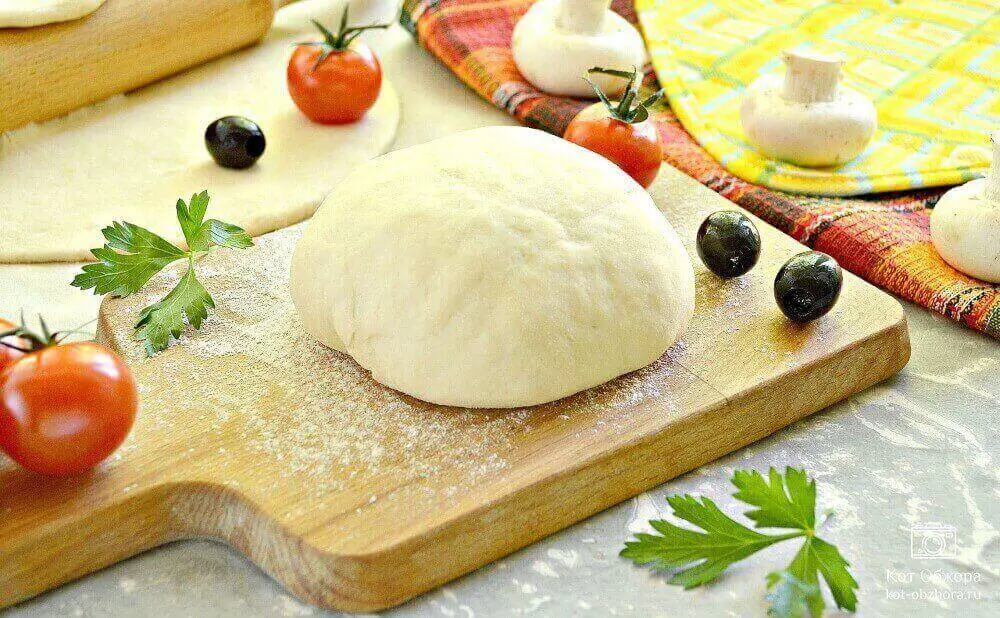
What Pizza Dough Hydration Is in Simple Words
Hydration is essentially the ratio of water to the amount of flour in pizza dough.
Different types of dough require different levels of hydration, depending on what qualities you want in your pizza dough. There is also a dependence on baking time and temperature.
How Much Hydration Is Needed for Homemade Pizza Dough?
The answer is 65% and more.
In general, the longer the pizza stays in the oven, the more hydrated it needs to be.
The basis of any pizza dough is flour, water, yeast, and salt. Water is what distinguishes one type of dough from another. The ratio of water amount to the amount of flour is important, which is why it is called hydration.
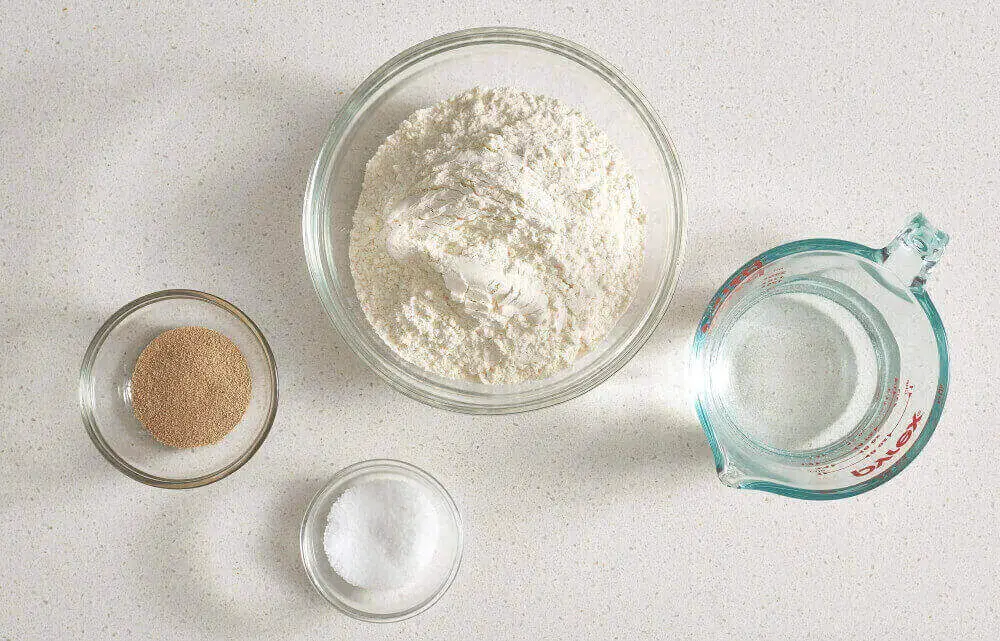
As a general rule, the more hydrated your dough is, the lighter, more tender, and fresher the dough will be, and you will get an airier pizza crust.
A large amount of water in the dough creates steam, which helps the dough expand during baking. This gives the crust a fresh appearance, while the inside remains moist and soft. Many pizza makers love this effect, so they recommend a hydration level of about 85%.
At the same time, the higher your pizza dough hydration, the more difficult it is to knead the dough. Above 70% hydration, the dough is easily torn, it is very difficult to stretch it and turn it into an even piece with the same thickness. Therefore, we recommend a level of 60 to 70%.
Bakers Percentages To Pizza Dough Hydration
Baking should be seen more as a science than an art. It is very important to observe the number of ingredients and to verify all the ratios depending on the desired result.
You can experiment with pizza toppings, but when it comes to pizza dough, it’s worth taking into account the capabilities of your home oven and strictly following the recipes.
To do this, you can rely on the baker’s percentages.
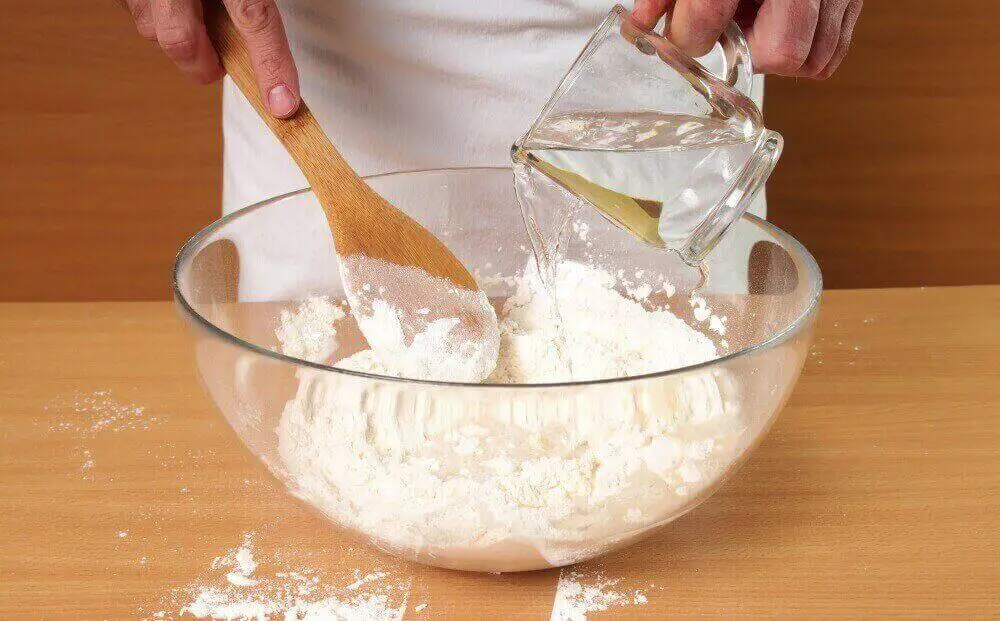
Baker’s percentages Method
Professional bakers who work in production mainly deal with recipes expressed in baker’s percentages, and everything is indicated there in percentages: water content, salt and sugar content, and so on. As a percentage in relation to flour.
Baker’s percentages is a method that allows you to calculate the ratio of ingredients for the kind of pizza you want. With these baker’s percentages, you will understand how to increase or decrease the number of ingredients without disturbing the hydration level of pizza dough.
Why in relation to flour? Flour is the main ingredient of any dough and often it is it that makes up the big share of the cost of the product, therefore the weight of flour is always taken as 100%.
The calculation of the recipe begins with flour, as the main product of baking. In recipes, absolutely any weight of flour is expressed in 100% (100g, 1000g, 10000g). There is a simple math formula for calculating the amount of additional product:
Weight / 100% * %, where weight is any amount of flour, where 100% is a constant value of the proportion, where % is the number of additional products required to prepare the dough, expressed as a percentage.
We continue our math and consider an example where we know the total amount of dough or sourdough and not just flour, and we know the moisture content, expressed as a percentage. This often occurs in recipes when they simply write the amount of starter and moisture.
For example, 240 gr. sourdough with a moisture content of 125%. What should we do?

Unit method by Jeffrey Hamelman
Jeffrey Hamelman, Bakery Director from King Arthur Flour Company, intelligibly explains the course of action in his book, Bread.
He treats the starter, regardless of its weight, as a certain number of units: 100 units of flour and 125 units of water, for a total of 225 units.
To figure out how much water and flour to take to get 240 gr. the leaven of the moisture we need (125%), we first need to calculate how much per unit.
To do this, we divide the total weight of the starter by the total number of units and get the value of one unit of starter (240:225=1.066…, rounded up to 1.06).
To calculate how much flour we need to take for our sourdough, we multiply 1.06 by 100 (the number of units of flour) and we get 106 gr.
To understand how much water to take, we multiply 1.06 by 125 (number of units of water, humidity), we get 132.5.
To check, add 106 and 132.5, and we get 238.5, and round up to 240 gr.
For example, according to the recipe you need to take 70 gr. sourdough with a hydration level of 80%.
We calculate the total number of units in the sourdough: add 80 water to 100 units of flour, we get 180.
Calculate the value of one unit: divide the total weight of the starter by the number of units: 70:180=0.38.
We calculate the amount of flour, multiply 0.38 by 100, we get 38.
We calculate the amount of water, multiply 0.38 by 80, and we get 30.4.
We check the correctness of the calculations, add 38 and 30.4, we get 68.4, and round up to 70 gr.
Everything worked out!
How The Pizza Dough Depends on The Level of Hydration
So what is going on in the pizza dough that can distinguish one from the other so much?
The hydration of pizza dough is the difference between the flour weight and the amount of water. By mixing water with flour, gluten is formed in the dough, which is why all kinds of manipulations can be performed with the dough and make it keep its shape.
If the hydration level is too high, the gluten bond in the dough is weakened and it becomes softer after baking pizza dough.
You need to strike a balance and find the line between too little water and too much.
Too little hydration will make the pizza dough dry and brittle, add a little more water and the dough will become soft, elastic, and flexible.
But if the hydration level exceeds 50, the pizza dough can become too dense and hard if baked for more than a few minutes.
If the hydration level is more than 70, you will have a wet and sticky dough that is too thin and very difficult to work with and shape.
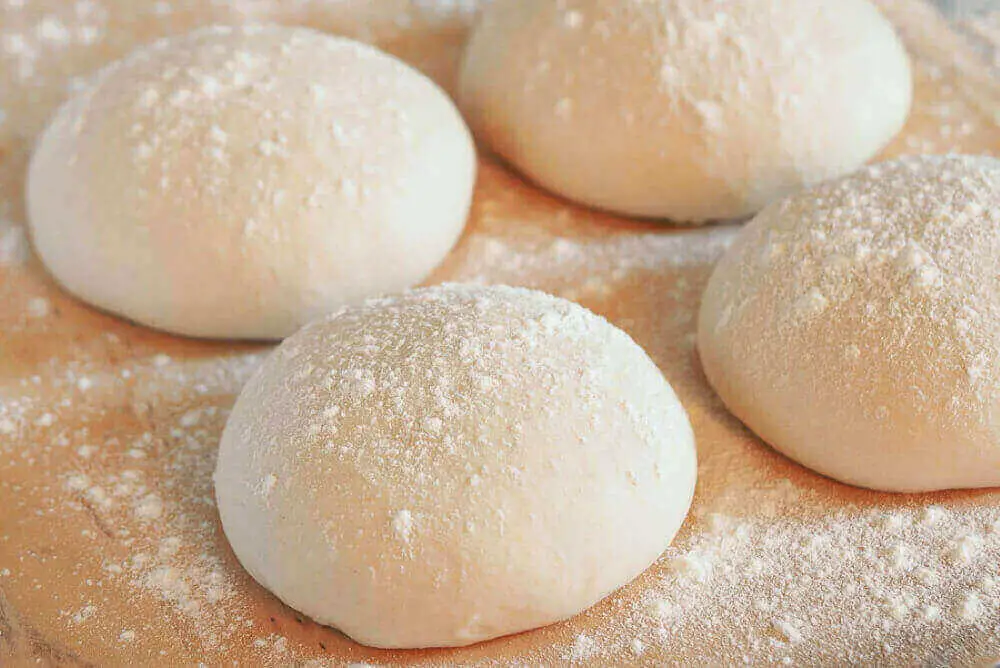
What Hydration Level for a Neapolitan pizza dough is good
Authentic Neapolitan pizza is baked in a traditional wood-fired oven that is heated to very high temperatures and is made of refractory bricks.
Under such conditions, Neapolitan style pizza crust can be baked in a couple of minutes, and because of this, very little liquid will evaporate from the dough. Therefore, the level of hydration may be lower.
Therefore, for wood-fired ovens, 55 percent hydration for pizza dough is normal, for your home oven, this level is better to increase to 65 percent.
Your home oven is unlikely to get as hot as a professional wood-fired oven. Therefore, the dough should be moister. The gluten strands will be weaker and more brittle due to the wet dough with high hydration.
Therefore, you will need to be more careful with such pizza dough.
A level of 65-68 percent is most optimal for home ovens and will be handy for beginner bakers to master the dough.
How To Fix Dry Pizza Dough
Now we know how low and high hydration affects pizza dough, but what do we do if the pizza is too dry?
The reason for this may be dehydration or too low a level of hydration of your dough.
If the hydration percentage is too low you will probably have to throw it away and start over with an adjusted recipe so there is enough water in the pizza dough.
The dehydrated pizza dough most likely turned out to be exposed to the air and stood for too long in the open space, as a result of which it dried out. Simply add water to dried areas.
Now you know what will cause reduced or increased pizza dough hydration, but sometimes it is impossible to predict everything and the recipe does not go the way we want.
In such cases, it would be worth starting all over again, but if you intend to bring everything to the end with this particular piece of dough, then there are several ways to “revive” the dough.
You will know that the hydration of the dough is too low if the pizza dough behaves strangely and does not stretch at all, no matter how hard you try.
Method 1
For this method, you need to calculate the hydration level of your dough and increase it to 65-70 percent by adding the difference in the amount of water.
Here is a step by step guide:
- Let the dough you are going to work with rest for a few hours.
- Determine how much water you need to add.
- Fill a large bowl with this water.
- Pinch off a piece of rested dough and drop it into a bowl of water.
- Try to dissolve this piece in water with your hands.
- Repeat this step until there is a high enough dough content in the water.
- Take the rest of the dough and mix with the water and dough mixture. Knead until you get a homogeneous mass.
- Put the resulting dough in a covered bowl and let stand for a couple of hours.
If everything goes as planned, you should be able to rebuild your pizza dough and saturate it with moisture, but keep in mind that the gluten strands in the new dough are quite weak and brittle, so you need to handle this dough as gently and carefully as possible.
While it’s very difficult to succeed with this method and it’s best to make fresh dough, this method can be useful if you run out of flour, for example.
Method 2
This method is more successful as it involves cold fermentation to make your dough moist and soft enough. This happens because the pizza dough absorbs some of the moisture from the refrigerator.
The pizza dough will become softer and moister thanks to water absorption without adding water directly to your hands. This method has other advantages as well.
Here is a rough guide:
- Place the dough in an airtight container. You can pre-lubricate it lightly with oil to prevent sticking.
- Let the bowl of dough stand in the refrigerator for a day or two for the cold fermentation process.
- Before using, divide the dough into dough balls and sprinkle them with semolina flour.
- Let the dough balls sit for an hour and a half before making the pizza.
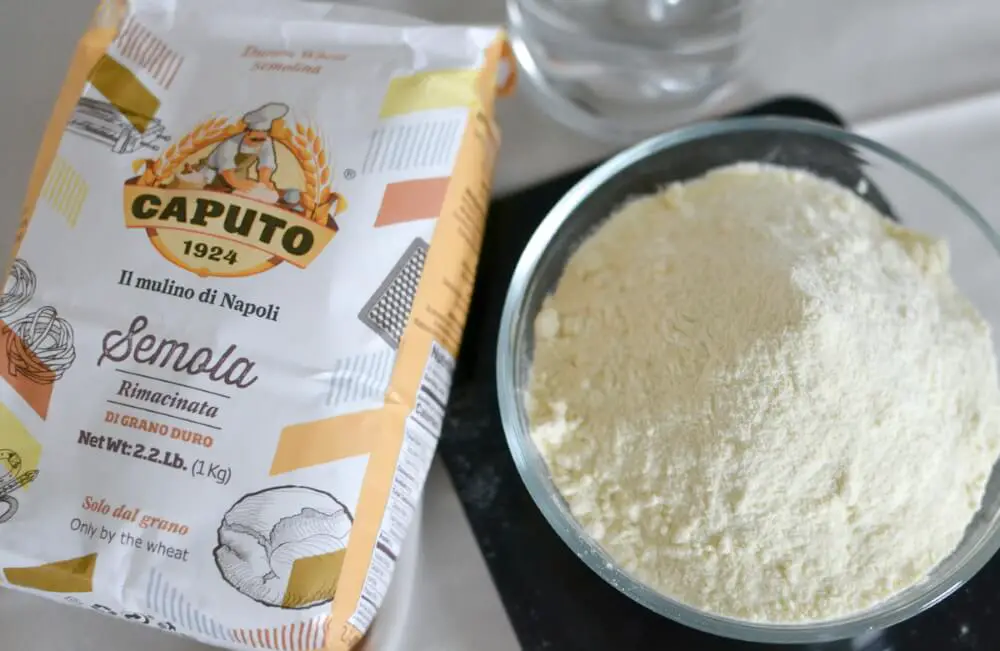
What To Do with Dehydrated Pizza Dough
It is easier to work with such a dough because most often this happens due to the drying of the outer layer of the dough, that is, a dry crust is formed. The pizza dough hydration itself does not suffer in any way. But it will simply burn during baking.
This dough is very easy to fix, just follow these steps:
- Spray dry areas with water.
- Gently knead the dough until you get rid of dry areas.
- Leave the dough for half an hour to an hour at room temperature.
- You can go back to pizza making.
This can be easily avoided by first covering the dough with a cloth or plastic wrap. Don’t leave your dough exposed to air. This will spare you some time and ease the pizza-making process.
Little tricks
Add a little cold-pressed olive oil to the finished dough. This will give the mass elasticity, and at the same time will not allow it to tear during the formation of the base.
To get a crispy pizza crust, you should also grease a baking sheet with olive oil. To prevent the pizza from sticking, you can sprinkle a little flour on the oil.
Before sending the workpiece into the pizza oven, the edges of the pizzas must be greased with the whipped yolk. When the pizza is ready, you need to get it, put it on a dish and cover it with a towel for 5-7 minutes.
The pizza sauce must be applied in a thin layer, otherwise, the middle of the pizza will be watery and the edges will harden.
Thanks to these tips, you will always have a soft dough and tasty pizza, and it will be a pleasure to eat it.
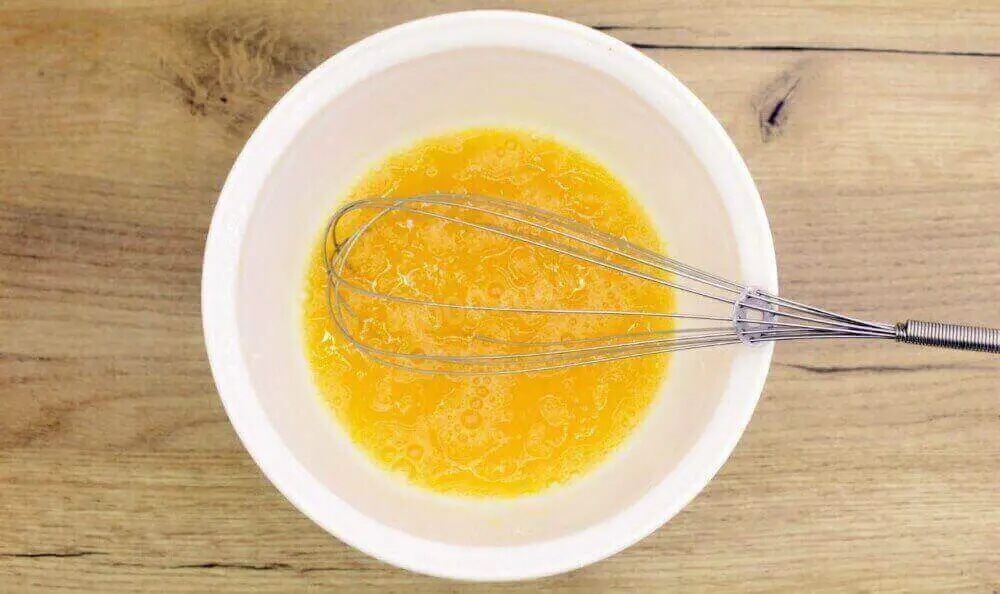
The secret of gentle kneading pizza dough
The secret to a perfect soft pizza is that the dough has as little contact with hard surfaces as possible.
Professional pizza makers never knead the dough with their hands or a rolling pin on the table – they form the base in the air. The less you touch the dough, the softer the pizza turns out. And all this is due to the loss of carbon dioxide.
When in contact with solid objects, air bubbles disappear from the dough.
When the dough is punched several times, trying to give mass splendor and elasticity, the structure is destroyed. Ultimately, the pizza is dry, with hard edges.
To prevent this from happening, it is necessary to handle the dough carefully, kneading it no more than 2-4 times.
It is best to roll out the base with your hands, without using a rolling pin. Also, don’t press too hard. Contact with the dough should be minimal, only in this way it will be possible to cook the perfect pizza. By the way, here are some Italian Tips On How To Make Thin Pizza Crust.
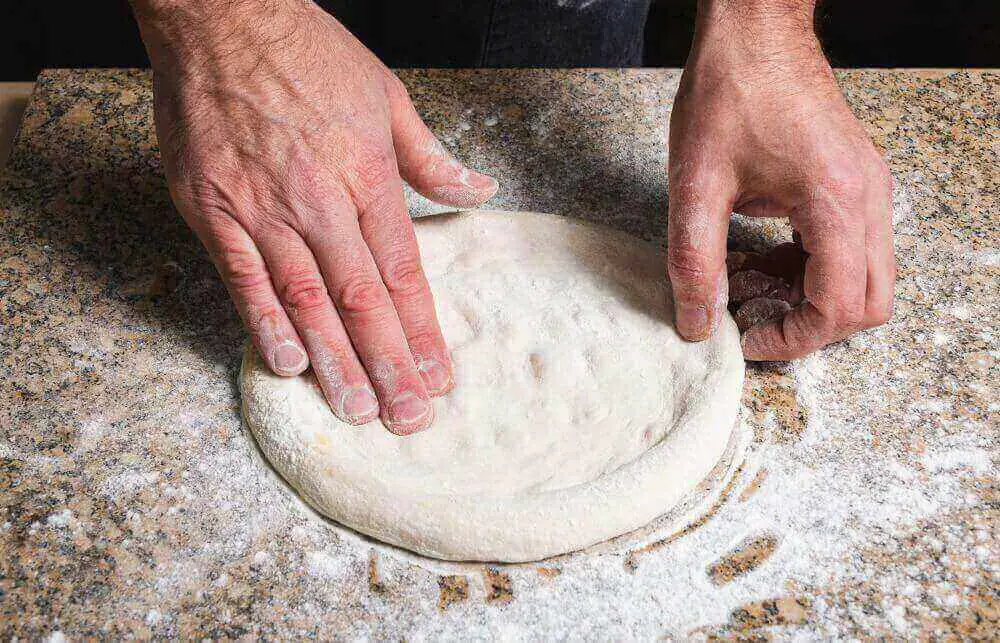
What Is Flour’s Water Absorption Rate
With different flour types, you will get different results with your dough. It is necessary to rely on the ability of flour to absorb water in order to properly hydrate the dough.
Pizza dough hydration and the flour’s water absorption level are two different things. Flour absorbs as much water as grain has strength and this figure can vary greatly depending on the type of flour.
These indicators are very easy to confuse since both criteria are expressed as a percentage and imply the relationship between flour and water.
Flours with a higher level of water absorption need more water than flours with a lower level. This is due to the fact that the flour “takes” and does not “give” more water to the dough, so this disadvantage must be compensated.
Most of the time, this information is not very useful, since flour packages don’t usually say how well it absorbs water. You will have to find out through your own experience, or at the very least, contact the flour manufacturers and ask them.
Basically, average flour has a water absorption rate of 55-65 percent, which means that it should be able to cope with a hydration level of 65 percent when following normal pizza recipes.
Some European 00 flours have lower water absorption rates, so just add less water next time when making pizza dough to prevent getting lower hydration pizza doughs.
Why No-Knead Pizza Retains Hydration Better
It is very easy to work with such pizza doughs, you do not need to adjust the amount of ingredients and your hands remain clean. In addition, you do not have to get rid of moisture and stickiness with additional flour.
With this recipe, you can simply mix all the ingredients in a large bowl with a spoon and leave the dough for 14-18 hours. This helps reduce dough handling time and reduces the risk of low pizza dough hydration levels due to too much flour pushing out moisture.
Besides, you will get a soft crust, because everyone wants a soft and airy pizza after baking it.
And if you also choose the cold fermentation process of the dough, it will get extra moisture from the refrigerator and thus the dough hydration level will be quite high without you having to puzzle over how to work with it and how to shape it without tearing.

Pizza Dough Hydration: FAQ
What does 70% hydration mean in pizza dough?
If we take 1000g of flour and 700 ml, we get a hydration level for pizza of 7 times 100, and thus 70 percent hydration for pizza dough.
What does more hydration do to pizza dough?
If you add too much water when making pizza dough you will end up with watery and sticky dough that is not so easy to work with, besides it will probably alter the taste of your pizza in the end, because sticking to the recipe is very important.
What is the ratio of flour to water for pizza dough?
The ratio of water to flour is simply the ratio of the amount of flour to the amount of water. This ratio is very important every time, depending on what kind of dough you want and what kind of pizza oven you have. For this, there is also such a thing as baker’s percentage, where experienced bakers working in production calculated for you the required amount of flour and water in the pizza dough.
What hydration should Neapolitan pizza dough be?
If you somehow have access to a wood-fired oven that you know how to use, then your Neapolitan pizza can have a 55 percent hydration level. At the same time, it is important to remember that in such an oven pizza bakes very quickly, due to which the moisture level of the dough can be lower.
For a home pizza oven, the best option is 65-68 percent Neapolitan pizza dough hydration.
How To Work with Sticky Pizza Dough?
If you don’t have time for a no-knead dough recipe and want to get the dough faster, you’ll have to knead it with your hands.
It’s not that difficult, but you’ll have to get your hands dirty and put in some effort. Especially if you want a more moist dough.
If the dough hydration level is very high, this dough can be a little hard to work with, very sticky and with very weak gluten threads.
But in no case give up, even if it seems that working with such a dough can be energy-intensive and more difficult to knead, it is not as difficult as it may seem to you.
You just need to use a pizza dough scraper to knead the dough and use it to layer the dough and fold it, then leave it for a few minutes and start the process from the beginning. Repeat several times until your dough is tender and soft.
Here is an approximate process:
- Mix the ingredients in a dough bowl until they are all uniformly incorporated.
- Move this mixture to a clean table.
- Using a pizza dough scraper, wrap and fold the dough for a couple of minutes.
- Cover the dough with a bowl and let it rest for about ten minutes.
- Repeat the previous two steps depending on what level of dough moisture you want to end up with.
- Once the dough has reached the desired consistency, place it in a container and cover it with cling film.
- Leave the dough to rest for as long as necessary according to the recipe you are following.
The author of this video is going to make a Neapolitan pizza with 75% hydration, perhaps some of his tips will help you fight the stickiness of the dough.
Conclusion
The level of dough hydration is a very important point that should not be neglected if you want a tasty and airy pizza. This is especially important for homemade pizza because it uses a home oven, which cannot get very hot.
If you bake pizza for too long, a very large amount of liquid will evaporate from the dough. Thus, baking pizza for a long time is not the best idea.
Therefore, it is worth figuring out how much water and flour you need for your pizza. Use a measuring cup and the math formula we provided you with in this article.
The best hydration for pizza is 65-68 %. Neapolitan pizzas at home should have such hydration of the dough due to being baked in a home oven.

High-hydration doughs give a softer pizza and can be baked for longer. Different bread flours will give you different results with your dough, think through the amount of flour and water. Stick to the bakers’ percentages to maintain the hydration percentage of the dough.
Cooking soft pizza is a culinary process consisting of many stages and requiring adherence to technology. If everything is done as professional masters recommend, the dish will definitely work out.
But the most important thing is to approach cooking with love, because, according to many housewives, the dough does not like haste and appreciates a good mood.

